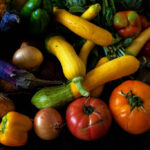Last week, in this space, I told you about the great Kalamazoo Outdoor Gourmet company, based in Michigan, that manufactures, what I consider to be, the Rolls-Royce-grills of the outdoor patio world. For people who like grilling with gas—though Kalamazoo cleverly builds options into their grills so you can also add wood or charcoal to the gas fire, if you desire—Kalamazoo is the way to go.
And the way to spend lots of money, too, given the calibre of Kalamazoo’s artisanal work.
Now, there are many backyard folks, like me, who normally eschew gas grills. Why? Building your own fire, without gas, is akin to driving a car with a stick: your sense of accomplishment is greater, but there is a learning curve. Some of us wood/charcoal nuts believe that the flavor of the food coming off a self-started wood or charcoal fire is, well, different (many would say “better.”) And lots of us love the crazy intuition it takes to build wood/charcoal fires of the right size and intensity; a gas fire, of course, is much easier to control.
In fact, everything about the gas fire is easier…from starting, to controlling, to cleaning. This is why they have become so popular.
But there is one inescapable and very desirable fact about the wood/charcoal fire: it ends up being a whole hell of a lot cheaper. Some of the wood/charcoal aficionados love it for that reason alone!
Of course, if you’re going to build a wood/charcoal fire, you’re gonna have to start it. In a moment, I’m going to tell you the ideal, super-inexpensive tool and technique for starting. Before I do, however, I just need to make one thing perfectly clear: no matter how inexpensive your wood/charcoal fire is, you should definitely avoid the whole option if your idea of starting a wood/charcoal fire is dousing it in starter fluid! This is the worst thing you can do in the whole world of grilling! A fire started with starter fluid smells like chemicals and kerosene as it lights, and the food itself ends up tasting like kerosene and chemicals. I don’t care how cheap this method is: DON’T USE IT!!!
Fortunately, there is a simple, inexpensive, non-starter-fluid way to build your wood/charcoal fire. It is called “the chimney starter,” and I have been using it for 40 years as my go-to fire-start.
I bought a new one recently, of a slightly smaller size because the small Weber I’m now filling on my urban terrace doesn’t take too much charcoal. The amount of charcoal the new device holds is perfect for my grill…
…and the chimney starter costs $7!!! Brand-new!
Building the fire is as easy as pie. The bottom of the starter…
…gets stuffed with one sheet of newspaper. And you’re ready to go! After adding the charcoal to the top, you simply light the newspaper in a few spots with a match, then lay the starter on a fireproof surface (dirt, stone, etc.), still with charcoal at the top, burning newspaper at the bottom.
Within a few minutes, the newspaper will be consumed by the fire, but the underside of the charcoal will have started to smolder and smoke.
Another few minutes and the underside of the coals start to sizzle and flame.
The chimney starter is a miracle of design; it enables the under-fire to keep going, and to eventually spread through the coals on top.
After 15 minutes, the thing’s a towering inferno.
As soon as the coals are glowing red all over…
 …you have but to spill them into the waiting grill unit (e.g. a Weber), over the lower grate (like I have in the photo at the top.)
…you have but to spill them into the waiting grill unit (e.g. a Weber), over the lower grate (like I have in the photo at the top.)
As with any wood/charcoal fire, now the waiting game begins. It is tempting to lay on the top grate and cook right away over red-hot coals, but most grill-meisters like to wait until the red goes away, leaving smoldering ash-grey coals behind. The theory is that grey coals cook more evenly, and are much less prone to flare-ups (which can scorch the food).
For the record, for my fires I prefer to use, big, irregular chunks of hardwood charcoal. Also for the record, this particular fire you’ve been watching went on to cook olive-oil-rubbed pork chops to perfection, as well as Italian sweet sausage. Served with fresh spinach (steamed briefly, then sautéed briefly with garlic), and a gorgeous little salad of vine-ripened tomatoes…my charcoal-starter mixed grill, along with a yummy bottle of young Italian red, brought lots of happiness at sunset!!!
NOTE: After the starter discussion, when people ask me about other equipment for outdoor grilling, I make sure they think about the one indispensable item that’s hardly ever mentioned: a good lamp! No matter how perfect your fire is, once the sun goes down you haven’t a prayer at getting your proteins right unless you can see them! On the terrace you’ve been observing in this article, I run a clip-on lamp with an extension cord to the adjoining room. I clip the lamp on the terrace railing…and I’m all ready to sizzle at sundown!
images: Robert S. Donovan/Flickr Creative Commons & David Rosengarten









